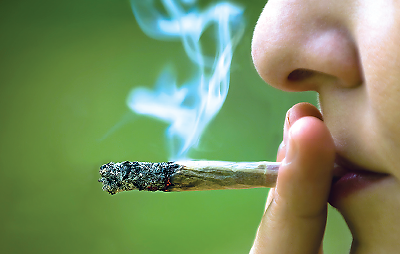Research Review Prompts NIDA Warning About Marijuana Use
Abstract
Though many young people seem to perceive marijuana as harmless, its use may pose serious risk for adverse behaviors and health consequences.
An extensive research review published June 5 in the New England Journal of Medicine concluded that marijuana use is linked to multiple adverse effects—particularly in youth.
“Despite some contentious discussions regarding the addictiveness of marijuana, the evidence clearly indicates that long-term marijuana use can lead to addiction,” said lead author Nora Volkow, M.D., director of the National Institute on Drug Abuse (NIDA), and three of NIDA’s top officials.

According to the 2012 National Survey on Drug Use and Health, marijuana is the most commonly used “illicit” drug in the United States, with an estimated 12 percent of people aged 12 or older reporting its use in the prior year. The 2013 Monitoring the Future Survey—supported by NIDA—found that 6.5 percent of 12th graders report daily or near-daily marijuana use, with 60 percent perceiving regular use of marijuana not to be harmful (Psychiatric News, February 6). Volkow and colleagues suggested that as more states move toward policies that legalize cannabis for medical or recreational purposes, rates for marijuana use among teenagers and young adults will increase, as will the negative health consequences associated with its use.
“The regular use of marijuana during adolescence is of particular concern, since use by this age group is associated with an increased likelihood of deleterious consequences,” Volkow and colleagues cautioned.
The review, “Adverse Health Effects of Marijuana Use,” provided science-based reasoning to explain the onset of marijuana addiction and gave an overview of the adverse health consequences associated with marijuana use from data of 77 studies and literature reviews.
From animal studies, the authors concluded that exposure to tetrahydrocannabinol (THC)—the primary psychoactive chemical in cannabis—in early life can recalibrate the dopaminergic system, the reward system of the brain, to become more sensitive to stimulation with drugs. The authors speculated that the findings may help to explain the increased vulnerability to abuse of marijuana and other substances in later life, which have been reported by adults who initiated cannabis use during adolescence.
The review also highlighted studies showing an association between marijuana use and impaired regions of the human brain, including the precuneas, a key node that is involved in alertness and self-conscious awareness, and the hippocampus, which is important in learning and memory. Other adverse consequences of cannabis use included impaired driving, lowered IQ scores into adulthood, and a potential risk to exacerbate psychotic symptoms in those with mental disorders. The review suggested that risks for adverse effects increase when the drug is used along with alcohol.
“Some physicians continue to prescribe marijuana for medicinal purposes despite limited evidence of a benefit,” noted Volkow and colleagues. “Because older studies are based on the effects of marijuana containing lower levels of THC, stronger adverse health effects may occur with the use of today’s more-potent marijuana.”
The authors emphasized that more research must be done on the potential health consequences of secondhand marijuana smoke, the long-term impact of prenatal cannabis exposure, and the effects of marijuana legalization policies on public health.
“It is important to alert the public that using marijuana in the teen years brings health, social, and academic risk,” said Volkow. “Physicians in particular can play a role in conveying to families that early marijuana use can interfere with crucial social and developmental milestones and can impair cognitive development.” ■
An abstract of “Adverse Health Effects of Marijuana Use” can be accessed here.



